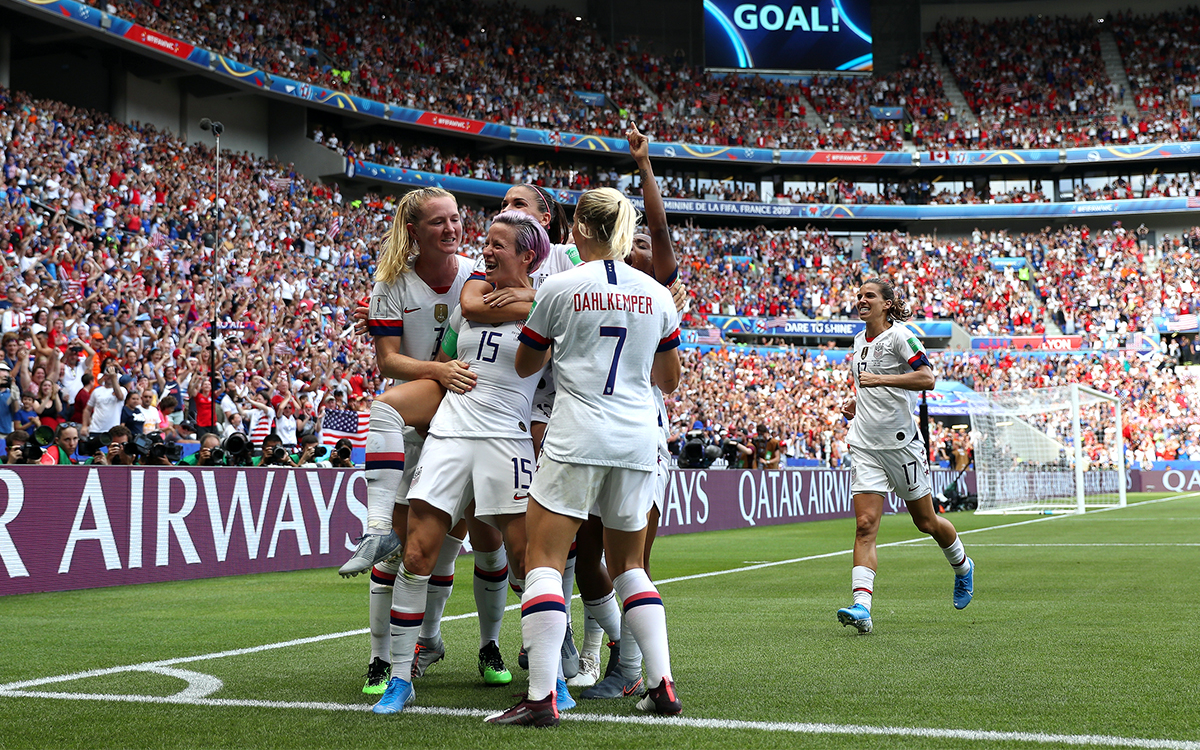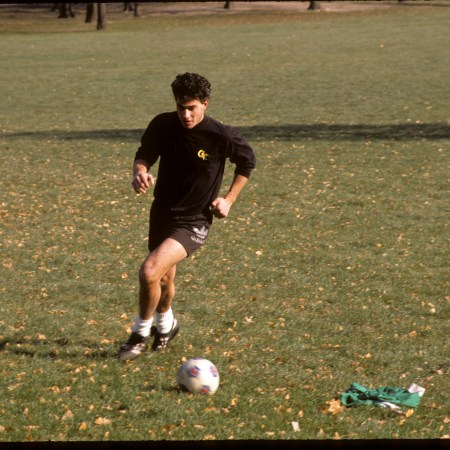They did it. Again. The U.S. Women’s National Team beat the Netherlands to win their fourth World Cup yesterday, capping off a stunning run of dominance on the global stage.
The conversation surrounding this team should be fairly straightforward. Megan Rapinoe, Alex Morgan, Rose Lavelle and Co. are an absolute powerhouse; even when they don’t score right away (it took a Rapinoe penalty in the 61st minute for the Americans to take the lead), they seem likely to at any second. They controlled the ball the entire game and launched 10 shots on target, to the Netherlands’s lone one.
That excellence, though, has continually been ignored in favor of fabricated debates over “arrogant” celebrations (Odell Beckham Jr. got less shit for fake-pissing on the Cleveland Browns’ end zone than Morgan got for sipping a cup of tea), cries that Rapinoe should keep politics out of sports (1. Sports and politics are inextricably linked, 2. Maybe she doesn’t want to travel to DC for room temp Chick-fil-A), and vicious Instagram comments, usually from Americans, gleefully reminding others that the USWNT lost to a U15 boys team in a scrimmage in Dallas a couple years ago.
More upsetting than the misogyny fueling those conversations, though, is the actual institutional inequity that the USWNT must deal with following their victory. Each player can expect to bring home a total of $250,000, which might seem sizable at first, but it’s small change compared to the men’s potential winnings. FIFA had a total prize pool of $400m for the men’s tournament in 2018, of which $38m went to the French national team, to be split between its 30-some-odd players and staff. Meanwhile, the total pool for the women’s tournament is $30m, and resulted in a $4m payout for the American women.
Each player will pocket about $115k of that money, plus cash for qualifying in the first place ($37, 500), for individually qualifying for the final roster (another $37,500), and for each win ($3,000 for each game, a total of $15,000). The players will also go on a “victory tour” when they return home, with four games that should net each player $60,000 a piece. This all equals that aforementioned $250k. We want to emphasize the fact that every single thing just listed must happen in order to reach that number. Meanwhile, the men’s side can earn $109k per player just from qualifying for the tournament, and if they (somehow) won, they’d walk away with a whopping $1.1m apiece.
Thanks to a proliferation of licensing agreements since U.S. Soccer and the players’ union negotiated a new collective bargaining agreement in 2017, players can expect to make money from customized jerseys and all sorts of trading cards and toys bearing their likenesses. Plus, players that have exclusive brand partnerships with Nike and Adidas are taking home some hefty paychecks on the side. But equal pay from both U.S. Soccer and FIFA at-large is still a work in progress. Mediation might soon be on the horizon for the USWNT’s gender discrimination suit with U.S. Soccer (winning the Cup again, having the highest selling soccer jersey on Nike, etc., gives them more clout than ever), and FIFA was reportedly delighted with how this summer’s tournament went, meaning the prize pie could be doubled in time for 2023.
Whether you’re looking to get into shape, or just get out of a funk, The Charge has got you covered. Sign up for our new wellness newsletter today.


















